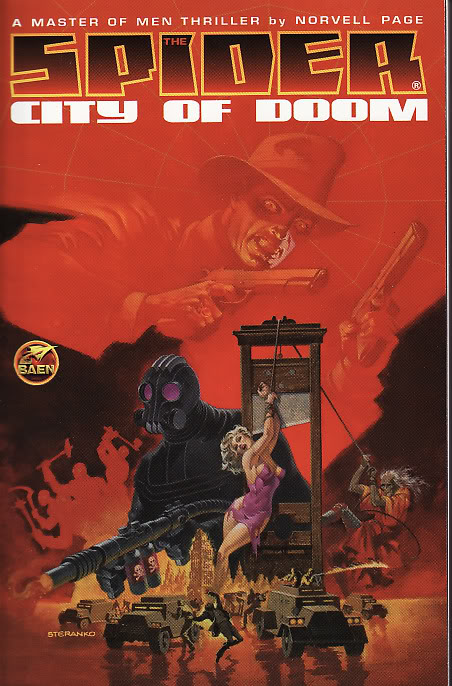Blogging Sax Rohmer’s The Return of Dr. Fu-Manchu, Part Seven – “Cragmire Tower”
 “Cragmire Tower” was the seventh installment of Sax Rohmer’s Fu-Manchu and Company. The story was first published in Collier’s on July 17, 1915 and was later expanded to comprise Chapters 21-23 of the second Fu-Manchu novel, The Devil Doctor first published in the UK in 1916 by Cassell and in the US by McBride & Nast under the variant title, The Return of Dr. Fu-Manchu.
“Cragmire Tower” was the seventh installment of Sax Rohmer’s Fu-Manchu and Company. The story was first published in Collier’s on July 17, 1915 and was later expanded to comprise Chapters 21-23 of the second Fu-Manchu novel, The Devil Doctor first published in the UK in 1916 by Cassell and in the US by McBride & Nast under the variant title, The Return of Dr. Fu-Manchu.
 Picking up where the last installment left off, the story gets underway with Inspector Weymouth’s fruitless raid on J. Salaman’s antique shop which has now been abandoned by Fu-Manchu and his gang. Nayland Smith rapidly informs Petrie that the American adventurer and psychic investigator Kegan Van Roon is completing a book about his experiences in China where he ran afoul of a fanatical group in Ho-Nan. Van Roon has leased Cragmire Tower in Somersetshire to finish his book. Naturally, Smith believes Van Roon’s life is in jeopardy as Fu-Manchu will not wish him to finish the book for publication.
Picking up where the last installment left off, the story gets underway with Inspector Weymouth’s fruitless raid on J. Salaman’s antique shop which has now been abandoned by Fu-Manchu and his gang. Nayland Smith rapidly informs Petrie that the American adventurer and psychic investigator Kegan Van Roon is completing a book about his experiences in China where he ran afoul of a fanatical group in Ho-Nan. Van Roon has leased Cragmire Tower in Somersetshire to finish his book. Naturally, Smith believes Van Roon’s life is in jeopardy as Fu-Manchu will not wish him to finish the book for publication.
Of course, Rohmer is repeating himself for Van Roon reads like a variation on Sir Lionel Barton and Cragmire Tower recalls Reverend Eltham’s beloved Redmoat. The familiarity of the trappings does little to spoil the proceedings for this is Rohmer at his peak and sees him introducing an occult element to the series. Rohmer had a lifelong fascination with the occult and secret societies. “Cragmire Tower” remains unique in its successful blend of Yellow Peril thriller with supernatural mystery.





